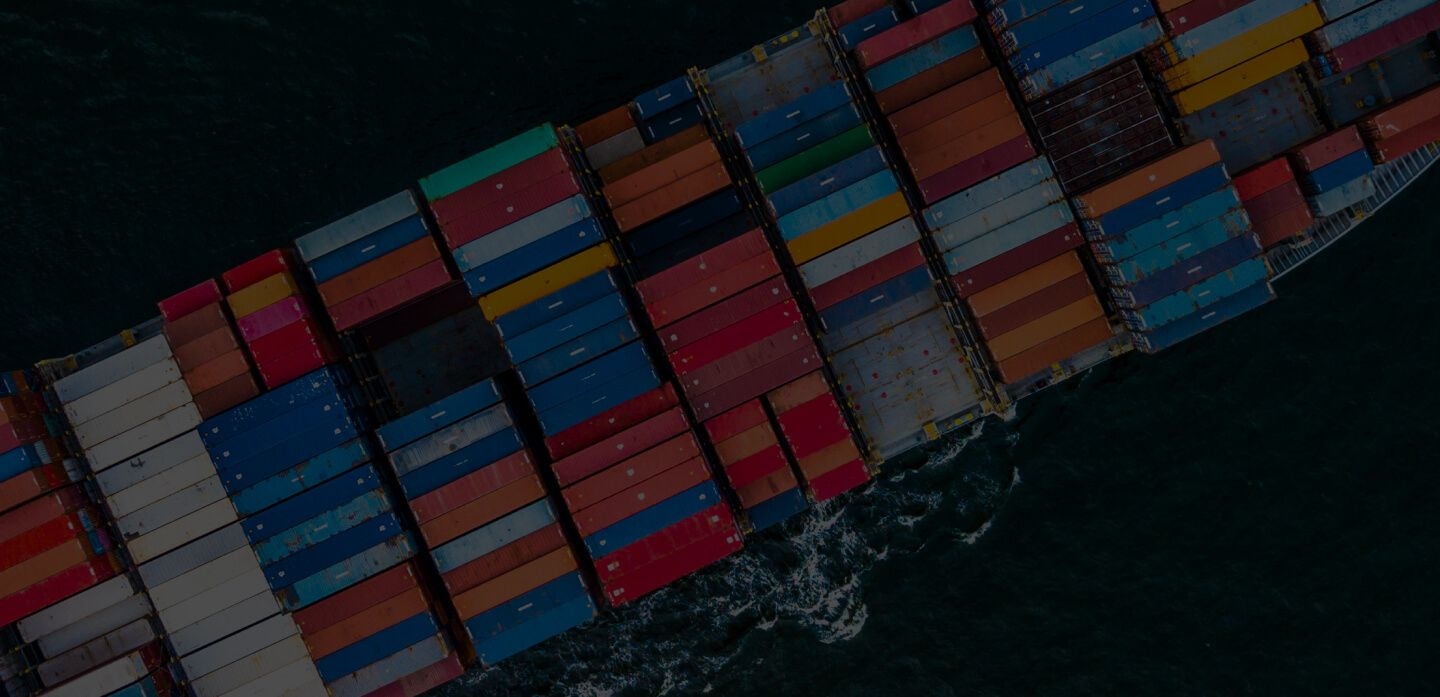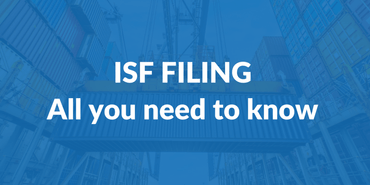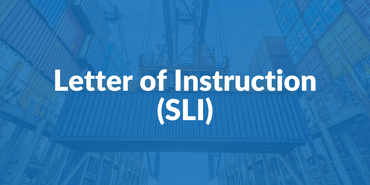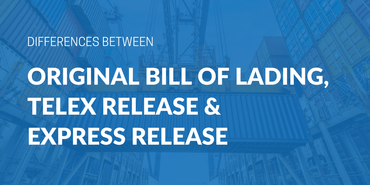
How to fill out a Bill of Lading



![]()
The Bill of Lading, often abbreviated as B/L, is a receipt for the cargo being shipped and acts as a transportation contract. The who, what, where, and where of your shipment should be detailed on your Bill of Lading.
The Bill of Lading is typically issued by the carrier detailing the contract of carriage with both the carrier and the shipper. This legal document is an important part of all ocean freight and is issued by a freight or cargo forwarder to each exporter, for goods to be shipped or transported. It is also proof that the carrier has received the goods from the shipper in good order and condition.
The B/L outlines various details that are essential when shipping goods. The parties involved with the shipment, including the shipper and consignee, the carrier that issued the Bill of Lading, the point and country of origin, and the release agent who handles your shipment when it reaches its destination, are all listed on the B/L.
There are many different types of Bill of Ladings. But whether you’re filling out an Original Bill of Lading, Telex Release, or Express Release, make sure you have the information to fill out the following fields:
![]()
1. Shipper (From)
Enter the company name and address of the shipper (consignor).
2. Bill of Lading number
A unique control number to reference the Bill of Lading.
3. Carrier booking number
A unique control number to reference the shipment with the carrier.
4. Export references
Shippers’ reference number such as PO numbers, etc. This allows you to track their shipping reference number.
5. Consignee
Fill in the complete information for the final recipient of the shipment, the ultimate consignee, if different from the destination, for carrier notification purposes.
6. Notify party
Fill in the complete information for the recipient of the shipment, if different from the consignee.
7. Release agent
Fill in the name of the agent the consignee should contact to obtain cargo release, arrival notices, etc, at destination. Note that these agents may offer customs clearance and delivery services but are not obliged to fulfill them.
8. Pier
Fill in the port where the cargo will be loaded.
9. Place of receipt by carrier
Fill in the location where the cargo will be received from the shipper.
10. Vessel and voyage number
Fill in the vessel name and voyage number which will be delivering the shipment to the consignee at destination.
11. Port of loading
Fill in the port where the cargo will be loaded. E.g. Port of Loading: Miami, FL. You may also be required to fill in the country.
12. Point of origin
Fill in the country of the actual shipping point.
13. Port of discharge
Fill in the port where the cargo will be arriving. E.g. Port of Loading: Miami, FL. You may also be required to fill in the country.
14. Place of delivery
Fill in the city where the carrier will be delivering the cargo to the consignee.
When shipping your cargo, the most important thing to make sure of is that the cargo arrives safely and without error. You should always get cargo insurance to further protect yourself against unanticipated incidents at sea. This is why the Bill of Lading is so relevant. Not only are the items being shipped listed, it also includes specific shipping instructions so your cargo arrives the same way it has left.
![]()
15. Marks & numbers/container numbers
Fill in the total number of packages per line item; whether the packages are consolidated on a pallet or in an outer container. Note the container seal number.
16. No. of trailers/containers and/or packages
Fill in the total number of trailers, containers, and/or packages.
17. Description of shipment
Fill in the description of each line item, noting the type of package (boxes, barrel, etc.) and the quantity per package. There must be a separate line item for each different freight classification description. If more than one type of packaging is used per freight classification, a separate entry must be used for each type of package. Also include handling instructions (i.e. fragile, should be kept cool, etc.)
18. Gross weight
Fill in the total gross weight, in pounds, for each line item.
19. Measurement
Fill in the total measurement for each line.
The final part of the Bill of Lading details the route of the shipment from origin to destination, how it is getting there, the shipping and arrival dates, as well as where the shipment goes to upon arrival.
![]()
20. Without recourse
This states that containers’ demurrages and detention charges at destination as per line’s tariff is payable by receiver. Storages expenses or any other dues or taxes to be for receivers. Read more on shipping delay charges.
21. Shipper’s declared value
The dollar value for cargo being shipped.
22. Terms and conditions
Brief summary of terms and conditions detailed on page 2.
23. Rate
Fill in the two-digit Class Rate per line item.
24. Base
Fill in the base cost to ship cargo.
25. Prepaid
Fill in the amount prepaid by the shipper.
26. Collect
Fill in the amount to be collected for the merchandise itself. Be sure to include the freight charges.
27. Currency
Currency used (i.e. USD, EUR, etc.).
28. Number of Original Bill of Ladings
Fill in the number of Bill of Ladings for the entire shipment.
29. Place and date of issue
Fill in the city and date of where and when the Bill of Lading is accepted.
30. Certification
Here, a signature is required by the Department of Transportation after this statement for all shipments.
31. Total
Fill in the total amount charged to ship the cargo.
32. Dated
Date the vessel is projected to depart.
33. Number of Bill of Ladings
Number of Bill of Ladings issued.
- 1. Shipper (From)
- 2. Bill of Lading number
- 3. Carrier booking number
- 4. Export references
- 5. Consignee
- 6. Notify party
- 7. Release agent
- 8. Pier
- 9. Place of receipt by carrier
- 10. Vessel and voyage number
- 11. Port of loading
- 12. Point of origin
- 13. Port of discharge
- 14. Place of delivery
- 15. Marks & numbers/container numbers
- 16. No. of trailers/containers and/or packages
- 17. Description of shipment
- 18. Gross weight
- 19. Measurement
- 20. Without recourse
- 21. Shipper’s declared value
- 22. Terms and conditions
- 23. Rate
- 24. Base
- 25. Prepaid
- 26. Collect
- 27. Currency
- 28. Number of Original Bill of Ladings
- 29. Place and date of issue
- 30. Certification
- 31. Total
- 32. Dated
- 33. Number of Bill of Ladings
Related Articles


